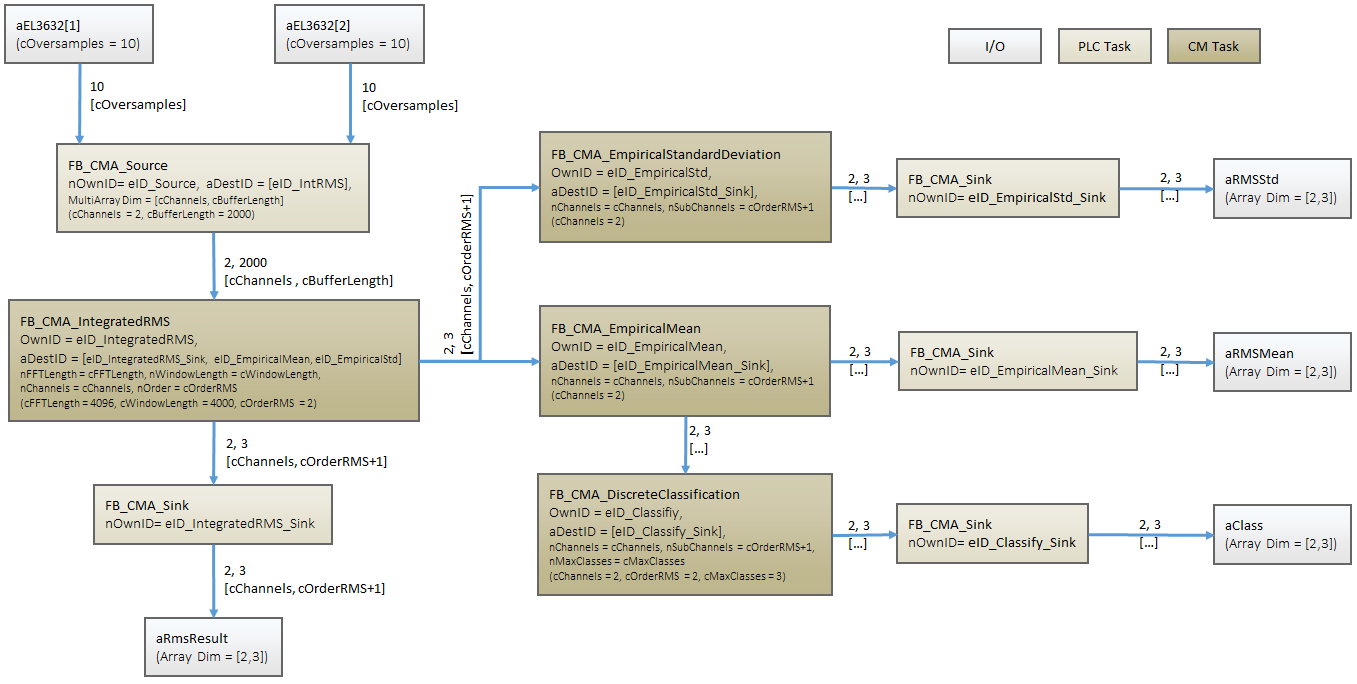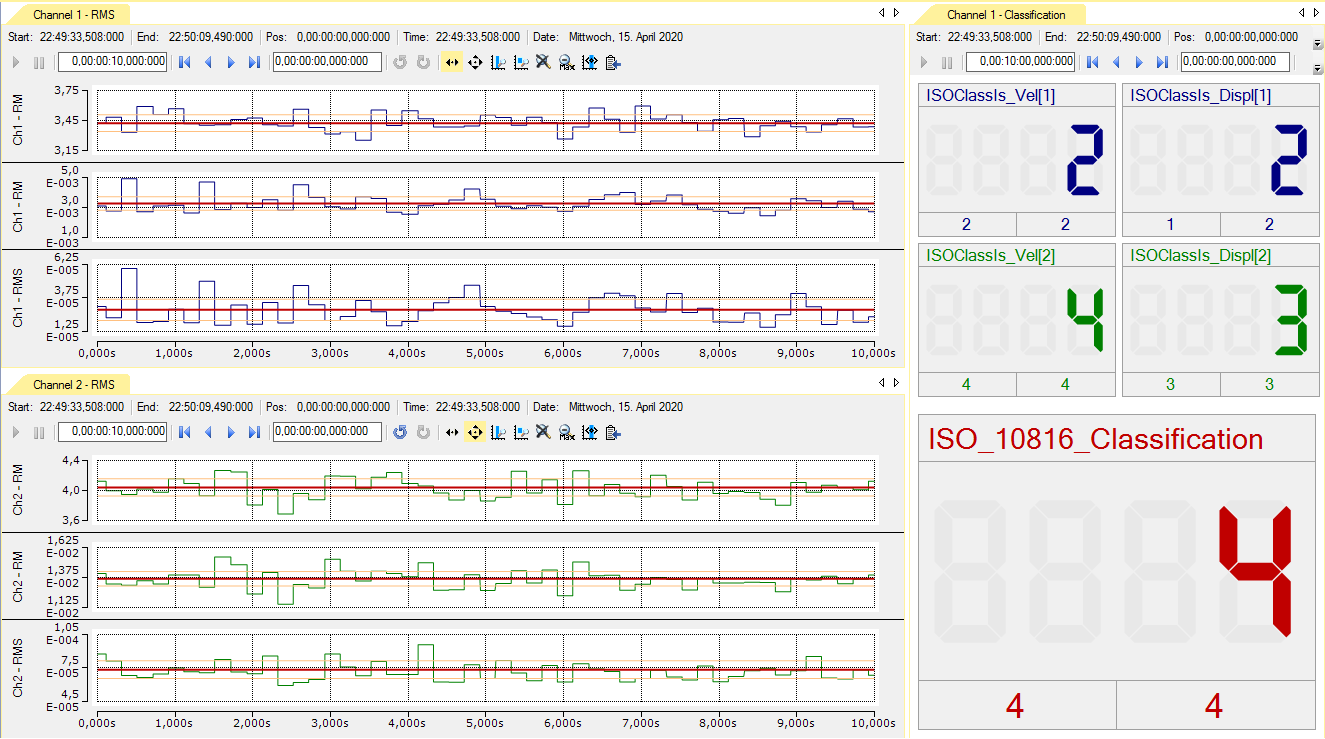Vibration assessment according to ISO 10816-3 (extended)
Vibration assessment based on ISO 10816-3 is explained in more detail in section Application concepts, see Vibration assessment.
In comparison with the sample Vibration assessment according to ISO 10816-3 the calculated (integrated) RMS values are first averaged with the help of the function block FB_CMA_EmpiricalMean. The classification takes place here on the basis of the mean values by an instance of FB_CMA_DiscreteClassification. By using statistical data, the machine evaluation is more stable than with the direct processing of the RMS values. The same effect could also be achieved in the above sample by adjusting the window length accordingly, but with a significantly higher computational effort.
The sample is available for download from here: TwinCAT_ISO_10816_Sample_extended.zip
Block diagram

Program parameters
The table below shows a list of important parameters for the configuration of the function blocks that are used.
Buffer size | 2000 |
Channels | 2 |
FFT length | 4096 |
Window size | 4000 |
Sampling rate | 10000 |
Lower frequency bound | 10 |
Upper frequency bound | 1000 |
Order (RMS) | 2 |
Classes (classification) | 3 |
Window type | eCM_HannWindow |
Data sets (statistics) | 100 |
Reset after calculation (statistics) |
|
Configuration
The speed and deflection of the measured data are used for the machine monitoring according to ISO 10816-3. A classification based on the acceleration data does not take place, but is used in related standards, e.g. ISO 10816-21 for wind turbines. The limit values used here are defined in the GVL_Constants:
cISOClassDef_Acc : ARRAY[1..3] OF LREAL := [1E6, 1E6, 1E6];
cISOClassDef_Velocity : ARRAY[1..3] OF LREAL := [2.3E-3, 4.5E-3, 7.1E-3];
cISOClassDef_Displ : ARRAY[1..3] OF LREAL := [29E-6, 57E-6, 90E-6];Evaluation
The calculated RMS values for velocity and deflection as well as the associated mean values and variance (standard deviations) are stored channel-wise in instances of ST_Channel. Exclusively the mean values are used for the classification. The variance can be used as a measure of the reliability of the mean value. The result of the classification is illustrated on the basis of the configured limit values by means of E_IsoClass. The result data are visualized via a Scope project.

Requirements
Development environment | Target platform | PLC libraries to include |
|---|---|---|
TwinCAT v3.1.4022.25 | PC or CX (x86, x64) | Tc3_CM, Tc3_CM_Base |
 | Limited functional scope already available with CM 3.1. See section Compatibility. |